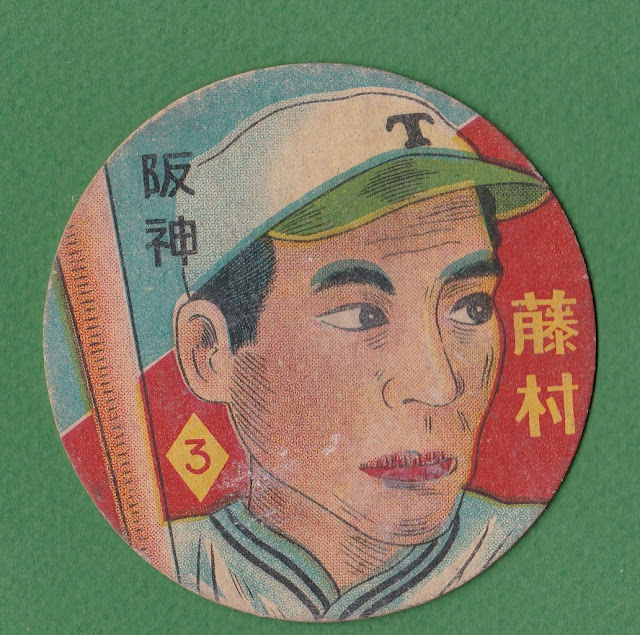I picked up three cards from one of the many oddball sets from the 60s the other day - the 1960 JBR 230 set ( referred to as "Toshiba Matsuda Lamp Coupon Bromides" in Engel).
This was a set of 25 cards issued to promote the 70th anniversary of......well, that is a hard question to answer but I'll give it a go here.
There are three issues with this set. First, what is the name of the product at the heart of the sale being advertised? Second, what is this 70th anniversary thing commemorating? Third, why were dads excluded from the celebration?
Lets start with the name. The Japanese spelling of the name of the product on the card is マツダランプ. Engel uses the correct conventions to turn that into the English "Matsuda Lamp", but on looking it up online it seems this might actually be a mistake. According to the Japanese Wikipedia entry the product in question was, bizarrely, actually an American rather than Japanese one. In 1909 the Shelby Electric Company in Ohio released a lightbulb it called the "Mazda Lamp", which through licensing agreements would later end up being produced in Japan by Toshiba. So I think "Mazda Lamp" is the correct name for these.
Now, what was celebrating a 70th anniversary in 1960? If the Mazda bulb was invented in 1909 it would have been only 51 years old in 1960 when these cards came out, not 70.
Likewise Toshiba itself wasn't turning 70, it had been created as a result of a merger of two other companies in 1939 and was thus just 21 years old.
One of its two predecessor companies (of the two which had merged to create Toshiba) - Tokyo Denki - had been founded in 1890 however, which makes the math work and thus these cards likely mark the anniversary of Tokyo Denki's founding, rather than the invention of the Mazda Lamp or the founding of Toshiba.
That leads us to the third issue, which arises from the back of the cards.
Look at all that blank, wasted space - you'd think you were looking at the back of a 2023 Topps NPB card.
The interesting thing is that little bit of writing at the bottom. The bottom part of the card was a cut off entry form that you could mail in to Toshiba in order to win a prize.
It appears however that dads weren't allowed to enter this contest. The columns are divided into two groups, one of which lists prizes for mothers (diamond ring, pearl necklace, perfume, cosmetics case, etc), and the other lists prizes for children (baseball glove, bicycle, tennis racket, etc). It doesn't specifically say that dads aren't allowed to enter, but there are no prizes for them listed so we can infer that they were de facto excluded.
If you are familiar with how tightly Japanese society still defines gender roles today, and then subtract 63 years of minimal progress on the gender equality front from that, the existence of this is not surprising. Moms go shopping for Mazda Lamps, kids come with them, dad goes to work and has nothing to do with that, so why even bother including him in a contest he's never going to see? Logical, but also kind of an odd piece of social history to see primary evidence of on a baseball card.
I should perhaps mention the players I got. Junzo Sekine, Katsuya Nomura and Minoru Murayama. All hall of famers! Not a bad group. The cards themselves are kind of neat - they are about postcard sized only more elongated. Definitely going to be a pain in the butt to figure out how to store them, but otherwise I'm happy to add them to the collection.






























